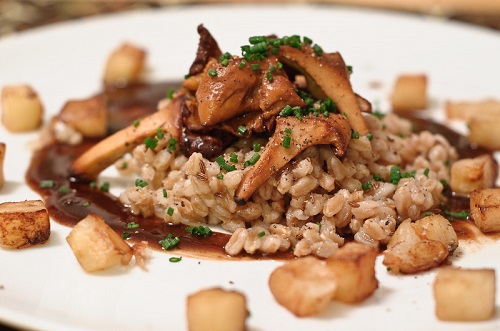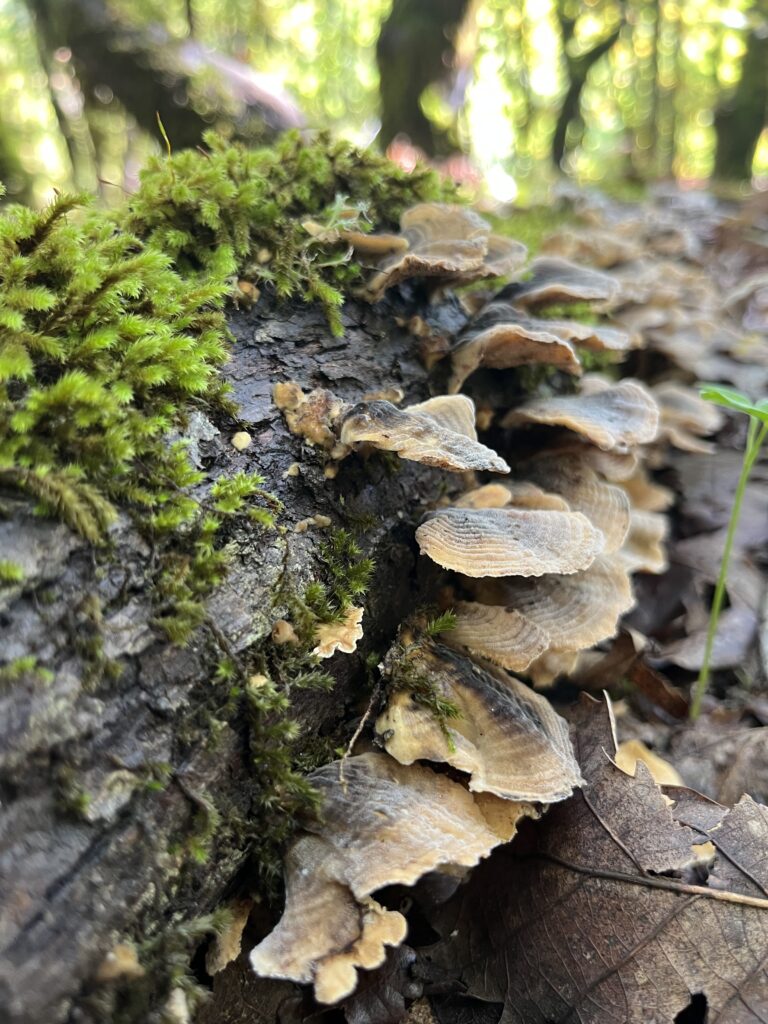With winter, dormancy comes. Yet a few life forms find this an optimum time to spring forth. One underappreciated denizen of our late-fall forest is the winter chanterelle also called yellowfoot (craterallus tubaeformis). In flavor and texture this is not the chanterelle you’re familiar with. The aroma has none of the apricot fruitiness and instead shows a tangy woodland duff.
When the first frosts arrive and many plants and fungi are reduced to decomposing mush, the winter chanterelle makes its appearance under a dusting of snow. It grows on heavily decayed logs and rich mossy forest floors. As a result it tends to be in middle-aged to mature forests: state parks, unmolested private woods or areas moist enough to encourage fast growth after the forest has been thinned. It’s a symbiont of conifers, preferring hemlock. Some research suggests, even when fraternizing with other species, hemlock is always present. Well suited to cryogenics, once thawed after a long night of freezing, it begins busily pumping out spores until the next night’s freeze. If still a ghostly popsicle in daylight, it can be broken at the base and brought home frozen.
The diminutive winter chanterelle is easily recognized but a bit hard to pinpoint in description. Looking nothing like our common chanterelle from above, they’re delicate in stature ranging in size from a pinkie finger to a small hand bell and supported by a well-defined, irregular hollow yellow stem. The wavy cap ranges from dirty orange to a warm brown. They do share the characteristic blunt decurrent gills of the family, and, once picked, this is the defining clue to its identity. To clarify, if you look on the underside, the spore-bearing surface is more like steep branching ridges than distinct gills.

As for holiday cuisine, the delicate flesh of winter chanterelle lends itself to soups, stuffings and sauces. They don’t hold up as a focal point, but their herbal earthiness is gaining popularity on the West Coast.
Identifying Attributes: Fruiting begins in November. Look for a slight physique, yellow stem, and ridge-like gills. Have your specimen ID confirmed the first time you pick it.
Culinary Attributes: A warming, mild fall flavor. If prepared whole, cook less than most mushrooms, and you get the enjoyment of eating the entire being in one bite, an endorphin hit for the inner forager.
Poisonous Look-alikes: The false chanterelle (hygrophoropsis aurantiaca) which grows on wood is easily avoided by its bright orange gills underneath, opposed to light-colored ridges of the winter chanterelle. Should you eat the false chanterelle mistakenly, worst case scenario there are reports of nausea, but from my personal experience it just tastes like musty, bitter cardboard.
Wine Pairings: Thanksgiving reds, i.e. Pinot Noir, Zinfandel, Cru Beaujolais, Nebbiolo.
Email Chadwick with your wild edible questions: [email protected]. //













